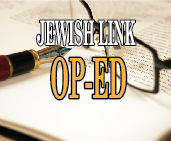In his announcement that he is leaving the RCA and officially launching the Open Orthodox (OO) movement, Rav Avi Weiss juxtaposed two descriptions to emphasize how this movement will distinguish itself – he takes issue with Modern Orthodoxy’s “shift to the right” and Modern Orthodoxy’s (MO) very definition. In addition, he contends that Open Orthodoxy, in fact, is not a new movement at all but rather one intent on recapturing, in a yearning for the good old days, what Modern Orthodoxy was all along. I would argue that these descriptions, without clear and agreed upon definitions, border on being used in a disingenuous manner.
To indicate that the issues he raises are indeed not new, I recollect an article that I wrote 20 years ago for the Bnai Yeshurun Bulletin. I wrote, “One definition of Modern Orthodoxy, in contrast to right wing orthodoxy, portrays a community which is simply less committed to Judaism in general and mitzvot in particular. In fact, one leading religious leader of the Israeli Haredi community described it as a diluted philosophy of Orthodox Judaism (In Yiddish – upgevaserred).” However, I continued “there is an alternative definition that I would like to suggest which is usually drowned out in the din of political and religious arguments. Namely, that there is no substantial difference in the commitment to the mitzvot between the Modern Orthodox religious philosophy and the right wing philosophy. There are, however, four significant areas where Modern Orthodoxy distinguishes itself.” I went to list them: Recognition of the religious significance of the State of Israel, a positive attitude toward secular education, engagement with the outside world, and recognition of the importance of Jewish education for women.”
As someone who is part of the first wave of the post WW II Baby Boomers and was raised and schooled in Modern Orthodoxy’s heyday of the 1950’s and 60’s, I would like to pose the following question: To what extent did MO ever exist as a religious philosophy or did MO simply describe a community practicing only the basics of Halachic observance (i.e, kashrut, shemirat Shabbat and mikvah as related to Taharat HaMishpacha [family purity]?
Before I continue, I want to state very clearly that I do not, chas v’Shalom, disparage the MO that I describe above, as times were different with significant challenges that had to be addressed. Let it suffice to remember that, in Mark Twain’s formulation, it was precisely this movement which proved that predictions of Orthodoxy’s demise in America were greatly exaggerated and that MO also stood as a bulwark against the Reform & Conservative movements, which were seen to be gaining members in exchange for the watering down of halacha.
Beginning in the late 1960’s and continuing through the 70’s and early 80’s, a phenomenon took hold that would change the face of MO in America; namely, young mostly men and some women spending a year post college continuing their Torah studies in Israeli institutions. This period differed from what eventually became known as the “gap year” in two ways. Those that went to Israel did so at a more mature age and did so before it became socially or academically obligatory. In general terms only, that meant there was greater seriousness attached to this endeavor. As these young men returned from a year, or more, totally immersed in Torah studies and a Torah environment, they found a MO community whose commitment to the observance of Mitzvot did not coincide with how they identified themselves religiously. I would posit that they nevertheless became a part of the fabric of the MO community which then evolved into a religious philosophy and not one that was limited to basic observance.
Let us fast forward to 2015.
The “shift to the right” that Rav Avi Weiss refers to pejoratively, for many simply means that the commitment to all mitzvot are taken very seriously but most importantly encompass the four areas listed above, black hats and outer garb notwithstanding. There is no question that for others the “shift to the right” has meant that the areas listed above have been jettisoned.
So, which MO is Open Orthodoxy recapturing, the MO of the 50’s and 60’s described above? And exactly how is OO distinguishing itself from the traditional MO, described above as a religious philosophy, which they are disassociating themselves from? I think that an honest appraisal of OO with its unbridled innovations will conclude that it is not at all bringing back the good old days but is moving into a completely new orbit with little, if any, gravitational pull restraining it from spinning out of control. This will, chas v’Shalom, cause an irreparable split in what is already a diminishing MO community.
Rabbi Tuly Polak has lived with his family in Teaneck for over 40 years. He has been privileged to offer shiurim in different venues and is currently the Maggid Shiur at the SWEAT Minyan.
By Rabbi Israel “Tuly” Polak










